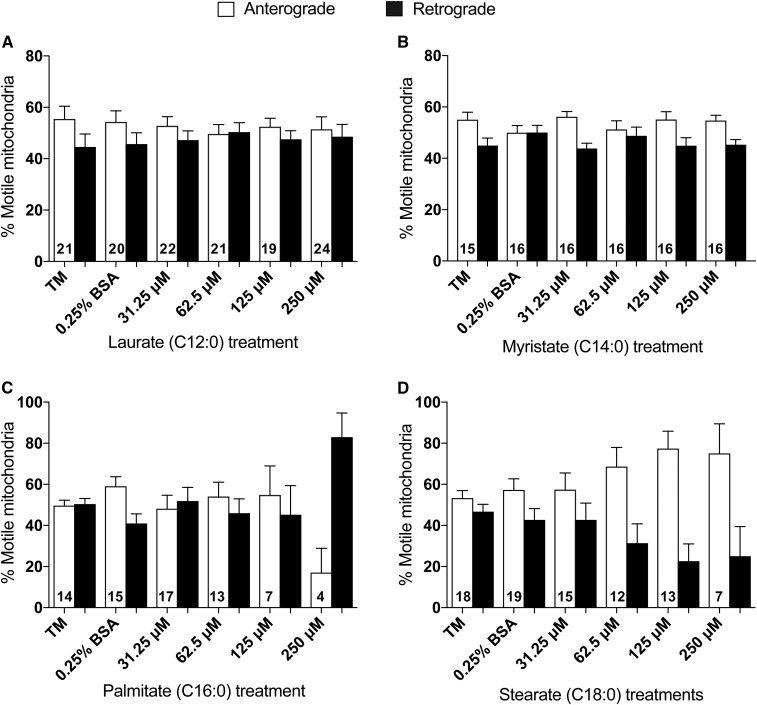Fig. 2.
LCSFA stearate treatment exhibits a preference for anterograde mitochondrial trafficking. A, B: Laurate and myristate showed no significant alteration in directionality of mitochondrial trafficking after 24 h treatments. C: Similarly, DRG neurons treated with palmitate for 24 h did not exhibit a preference for anterograde (open bars) or retrograde (filled bars) directionality, although a visible but nonsignificant reduction in anterograde mitochondrial transport was noted at 250 μM palmitate. D: Treatments of 125–250 μM stearate induced a trending, dose-dependent increase in anterograde mitochondrial trafficking relative to retrograde mitochondrial directionality. The total number of DRG neurons that were evaluated for anterograde and retrograde mitochondrial directionality in each treatment condition are given in each set of bars. Values are expressed as mean ± SEM.

